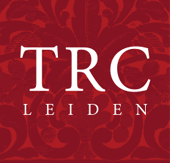Berlin work charts were first produced and published in the early nineteenth century in Berlin (Germany), hence their name. The first patterns were printed in black and white on grid paper with lines and dots indicating the desired colours. These charts were then hand coloured using a thick paint of the appropriate hues. Later designs were machine printed in colour. Most of the designs in the TRC collection are floral, with bunches of flowers, sprigs and wreaths. The flowers include roses of various colours (white, red, purple). The flowers include ilies, primulas, bluebells, violets, columbines and others.
 Berlin work chart, with a bunch of flowers, including roses, Germany 1840s - 1850s (TRC 2018.1560). For more information, click on the illustration.It may be added that in the nineteenth century considerable attention was paid to the symbolism of flowers, such as a white violet denoting innocence, while a purple violet could symbolise thoughts of love. Yellow roses referred to joy; white roses to innocence and purity; pink roses to happiness, etc.
Berlin work chart, with a bunch of flowers, including roses, Germany 1840s - 1850s (TRC 2018.1560). For more information, click on the illustration.It may be added that in the nineteenth century considerable attention was paid to the symbolism of flowers, such as a white violet denoting innocence, while a purple violet could symbolise thoughts of love. Yellow roses referred to joy; white roses to innocence and purity; pink roses to happiness, etc.
The illustration to the left shows part of a Berlin work chart with a floral motif. The chart is hand-painted, but the paint has been partially rubbed off, thereby showing the V, X, /, etc. codes for the use of various colours.


